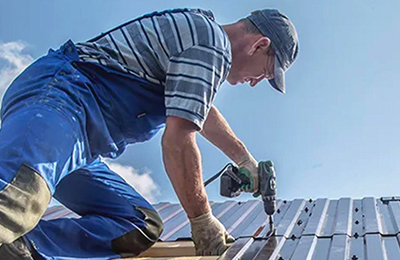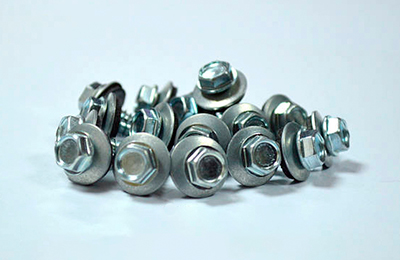Self-tapping screws are subtle yet essential elements of construction structures. They ensure strong and reliable fastening while withstanding significant loads. Let’s take a closer look at their types, characteristics, and key principles of use.
Types of Self-Tapping Screws
- Wood Self-Tapping Screws. Used for fastening to wooden surfaces, such as metal roofing sheets or corrugated metal sheets. They have a larger thread pitch and a thinner tip, ensuring secure penetration into the wood. A 4.8 mm thick self-tapping screw can drill through four 0.55 mm sheets or 2 mm of metal.
- Metal Self-Tapping Screws. Designed for joining metal structures. They are equipped with a drill-tip, allowing them to work with metal sheets of varying thicknesses. A 4.8 mm thick self-tapping screw should drill through at least 4 mm of base material, while a 5.5 mm screw should penetrate 5 mm accordingly.
Key Characteristics of Self-Tapping Screws:
- Length. Varies depending on the intended use. Roofing self-tapping screws for wood, sized 4.8×35 mm, can be used for installing metal roofing sheets onto wooden battens. There are also specially designed 4.8×20 mm screws capable of drilling through two steel sheets up to 1 mm thick with a thin drill tip, pulling them tightly to the washer with their thread (stitching screws). For securing ridge profiles or snow guards on a wooden roof, larger roofing screws such as 4.8×60 mm and 4.8×70 mm are used.
- Material. Self-tapping screws are typically made of steel (C1022) with a zinc coating, which provides corrosion resistance.
- Washer with Gasket. Made of EPDM rubber, which ensures sealing, durability, and resistance to UV exposure.
How to Choose a High-Quality Self-Tapping Screw:
- Packaging. A high-quality manufacturer always provides labeling that includes size, material, and compliance standards.
- Coating. The coating should be uniform and chip-free, with a minimum thickness of 50 microns to ensure corrosion protection and maintain aesthetic properties.
- Weather Resistance. Self-tapping screws intended for outdoor use must have adequate zinc coating (at least 12 microns) to ensure durability and protection against environmental factors.
Rules for Installing Self-Tapping Screws

- Use screwdrivers with adjustable speed and torque settings. When driving roofing self-tapping screws into wood, the screwdriver speed should not exceed 1,800 RPM, while for metal self-tapping screws, the speed should be no more than 1,500 RPM.
- Screw in the self-tapping screws at a 90-degree angle to the surface.
- Control the tightening force to avoid damaging the sealing washer. After installation, the edge of the EPDM gasket may extend beyond the steel washer by approximately 0.5–1 mm.
Common Mistakes During Installation
- Using tools without speed control.
- Incorrect selection of self-tapping screws for the specific material.
- Over-tightening self-tapping screws, which leads to seal damage.
Self-tapping screws are the foundation of reliable fastening, ensuring the durability and safety of structures. Their proper selection and use are key to the successful installation of any construction materials.

